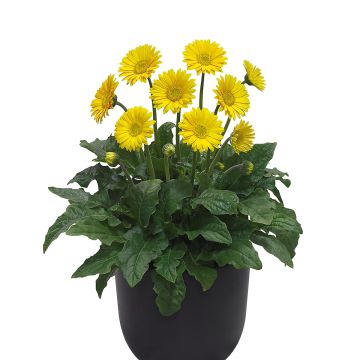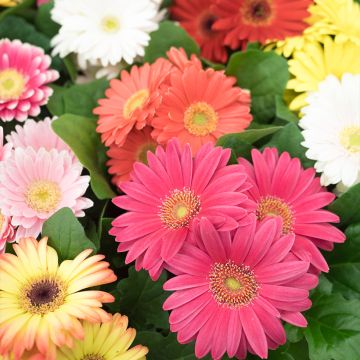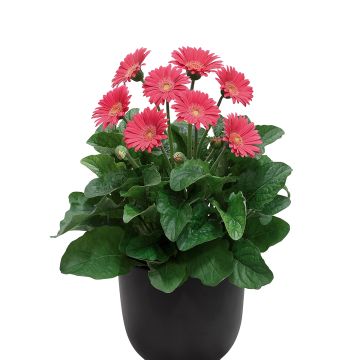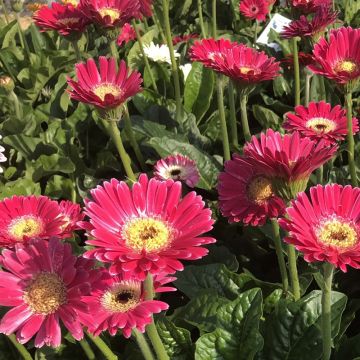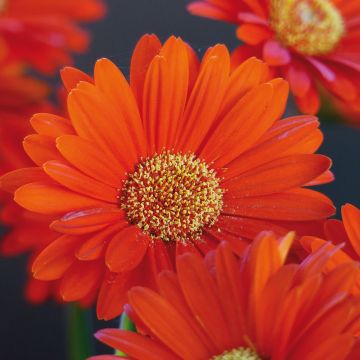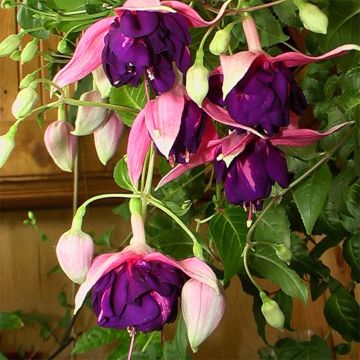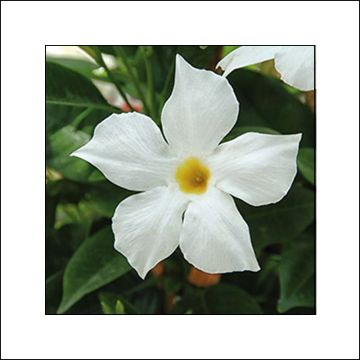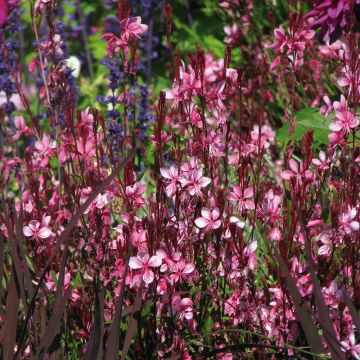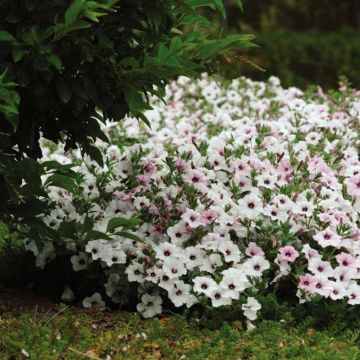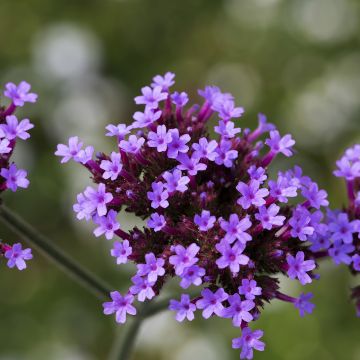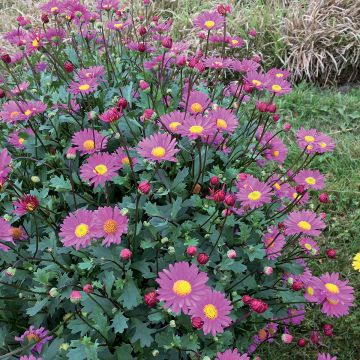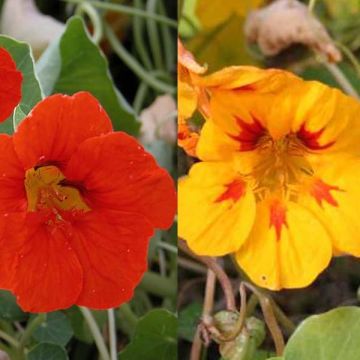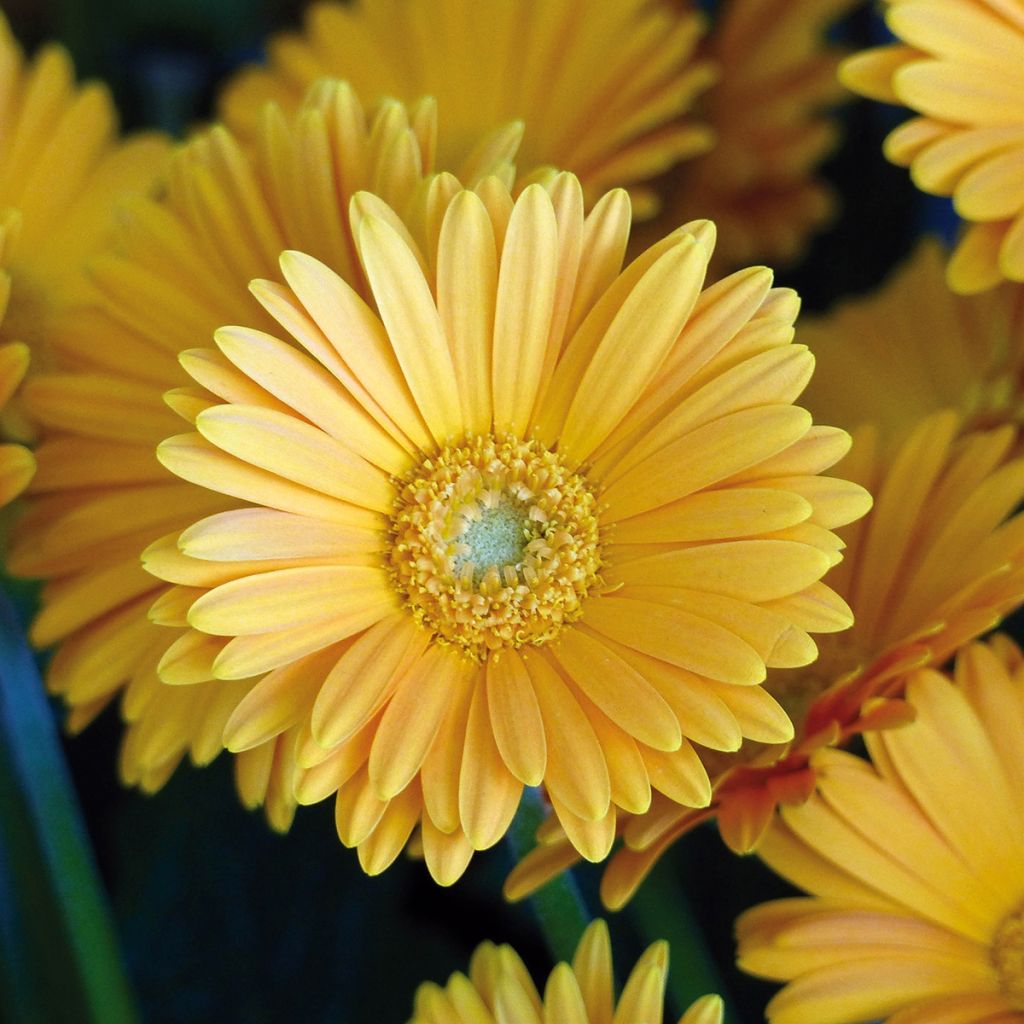

Gerbera Garvinea ® Sweet Sweet Love
Gerbera Garvinea Sweet Sweet Love
Gerbera x jamesonii Garvinea ® Sweet Sweet Love
Gerbera
I bought 3 sets of gerbera, 1 yellow, 1 orange, and 1 pink. In the end, none of them match the colors, the flowers are all more or less reddish-orange. Quite disappointed, not a single yellow one! We'll see about the pink ones, they're running late.
marinette, 21/06/2023
This item cannot be shipped to the selected country
Delivery charge from €5.90
More information
Schedule delivery date,
and select date in basket
This plant carries a 6 months recovery warranty
More information
We guarantee the quality of our plants for a full growing cycle, and will replace at our expense any plant that fails to recover under normal climatic and planting conditions.
From €5.90 for pickup delivery and €6.90 for home delivery
Express home delivery from €8.90.
Does this plant fit my garden?
Set up your Plantfit profile →
Description
Gerbera Garvinea Sweet 'Sweet Love' is an excellent variety of bright red gerbera. It is more resistant to cold and diseases, making it suitable for both pot and open ground cultivation. It is a floriferous perennial that can withstand short frosts, down to -10°C (14°F) if the stump is protected. Throughout summer, this variety bears red daisy-like flowers adorned with a green heart. It is ideal for creating beautiful potted displays. It will also make a great impact in borders and flower beds. Its cut flowers last a long time in a vase.
Gerbera Garvinea 'Sweet Love' belongs to the Asteraceae family. It is a hybrid derived from G. jamesonii, a species native to southeast Africa. The gerberas in the Garvinea Sweet series have been selected for their increased hardiness and ease of cultivation, both in open ground and in pots. They are short-lived perennial plants that thrive in humus-rich, moisture-retaining soils throughout the growing and flowering period. They are robust and generous, but dislike the presence of limestone in soil. They also do not like hot exposures.
Gerbera Garvinea 'Sweet Love' has long, deeply lobed, vibrant green leaves arranged in a lush rosette. When in flower, the plant will reach an average height of 40cm (16in) and a diameter of 30cm (12in). It will retain some leaves if there is no frost, but will become completely deciduous otherwise. Flowering occurs from May to October. The flowers are slightly smaller than those used by florists. They resemble large scarlet-red daisies with a light green heart dusted with golden pollen, measuring approximately 8cm (3in) in diameter. With a little care, you can keep your gerbera for several years. In regions that are not too cold, you can plant it in flower beds, in well-drained soil, and place a good mulch around the base to protect it from both cold and excessive humidity. Elsewhere, cultivate this gerbera in a pot or container and bring it indoors to a veranda or garage. In cool temperatures, the foliage often disappears. In mid-May, take the pots outside and the warm weather will encourage the foliage to grow.
The radiant flowers of Gerbera Garvinea 'Sweet Love' are striking on their own, and will look incredible in a large pot on a patio or balcony. You can also pair it with light annuals, such as Euphorbia 'Diamond Frost', or white or blue lobelias. In a border or flower bed, for example, you can plant it with blue calibrachoa, Coreopsis Uptick Cream, and Diascia 'Blackthorn Apricot'. The cut flowers last a long time in a vase, and will blend perfectly in a bouquet with roses, alstroemerias, or snapdragons. To decorate a centrepiece, cut the flowers just below the calyx and let them float in a large bowl filled with water.
In pots, we recommend regular watering, otherwise the flowers will droop. If this happens, a good watering will make the stems stand upright again. Use an annual fertiliser every 15 days. Expose them to full sun or partial shade.
Our young plug plants are professional products intended for experienced gardeners. Upon receipt, transplant and store them in sheltered areas (veranda, greenhouse, cold frame) at a temperature above 14°C (57.2°F) for a few weeks before placing them outdoors once the risk of frost has passed.
Report an error about the product description
Flowering
Foliage
Plant habit
Botanical data
Gerbera
x jamesonii
Garvinea ® Sweet Sweet Love
Asteraceae
Gerbera
Cultivar or hybrid
Other Gerbera
Planting and care
Gerbera Garvinea 'Sweet Love' is grown as an annual in very cold regions, but it is a perennial that can withstand occasional frosts of around -10°C (14°F) if the stump is mulched and if it is planted in well-drained soil that is not too damp in winter. With a little attention, you can keep your plant for several years. In colder regions, grow gerberas in pots or containers and bring them inside to a veranda or garage. In cool conditions, the foliage often disappears. In mid-May, take the pots outside and the warm weather will encourage the foliage to grow. In pots, we recommend regular watering, otherwise the flowers will droop. If this happens, a good watering will make the stems stand upright again. Use an annual fertiliser every 15 days.
Gerbera is sensitive to limestone and excessively hot conditions. Water with low or non-limestone water (rainwater). Avoid afternoon sun in very hot regions.
Planting period
Intended location
Care
-
, onOrder confirmed
Reply from on Promesse de fleurs
Plug plants - Annuals
Haven't found what you were looking for?
Hardiness is the lowest winter temperature a plant can endure without suffering serious damage or even dying. However, hardiness is affected by location (a sheltered area, such as a patio), protection (winter cover) and soil type (hardiness is improved by well-drained soil).

Photo Sharing Terms & Conditions
In order to encourage gardeners to interact and share their experiences, Promesse de fleurs offers various media enabling content to be uploaded onto its Site - in particular via the ‘Photo sharing’ module.
The User agrees to refrain from:
- Posting any content that is illegal, prejudicial, insulting, racist, inciteful to hatred, revisionist, contrary to public decency, that infringes on privacy or on the privacy rights of third parties, in particular the publicity rights of persons and goods, intellectual property rights, or the right to privacy.
- Submitting content on behalf of a third party;
- Impersonate the identity of a third party and/or publish any personal information about a third party;
In general, the User undertakes to refrain from any unethical behaviour.
All Content (in particular text, comments, files, images, photos, videos, creative works, etc.), which may be subject to property or intellectual property rights, image or other private rights, shall remain the property of the User, subject to the limited rights granted by the terms of the licence granted by Promesse de fleurs as stated below. Users are at liberty to publish or not to publish such Content on the Site, notably via the ‘Photo Sharing’ facility, and accept that this Content shall be made public and freely accessible, notably on the Internet.
Users further acknowledge, undertake to have ,and guarantee that they hold all necessary rights and permissions to publish such material on the Site, in particular with regard to the legislation in force pertaining to any privacy, property, intellectual property, image, or contractual rights, or rights of any other nature. By publishing such Content on the Site, Users acknowledge accepting full liability as publishers of the Content within the meaning of the law, and grant Promesse de fleurs, free of charge, an inclusive, worldwide licence for the said Content for the entire duration of its publication, including all reproduction, representation, up/downloading, displaying, performing, transmission, and storage rights.
Users also grant permission for their name to be linked to the Content and accept that this link may not always be made available.
By engaging in posting material, Users consent to their Content becoming automatically accessible on the Internet, in particular on other sites and/or blogs and/or web pages of the Promesse de fleurs site, including in particular social pages and the Promesse de fleurs catalogue.
Users may secure the removal of entrusted content free of charge by issuing a simple request via our contact form.
The flowering period indicated on our website applies to countries and regions located in USDA zone 8 (France, the United Kingdom, Ireland, the Netherlands, etc.)
It will vary according to where you live:
- In zones 9 to 10 (Italy, Spain, Greece, etc.), flowering will occur about 2 to 4 weeks earlier.
- In zones 6 to 7 (Germany, Poland, Slovenia, and lower mountainous regions), flowering will be delayed by 2 to 3 weeks.
- In zone 5 (Central Europe, Scandinavia), blooming will be delayed by 3 to 5 weeks.
In temperate climates, pruning of spring-flowering shrubs (forsythia, spireas, etc.) should be done just after flowering.
Pruning of summer-flowering shrubs (Indian Lilac, Perovskia, etc.) can be done in winter or spring.
In cold regions as well as with frost-sensitive plants, avoid pruning too early when severe frosts may still occur.
The planting period indicated on our website applies to countries and regions located in USDA zone 8 (France, United Kingdom, Ireland, Netherlands).
It will vary according to where you live:
- In Mediterranean zones (Marseille, Madrid, Milan, etc.), autumn and winter are the best planting periods.
- In continental zones (Strasbourg, Munich, Vienna, etc.), delay planting by 2 to 3 weeks in spring and bring it forward by 2 to 4 weeks in autumn.
- In mountainous regions (the Alps, Pyrenees, Carpathians, etc.), it is best to plant in late spring (May-June) or late summer (August-September).
The harvesting period indicated on our website applies to countries and regions in USDA zone 8 (France, England, Ireland, the Netherlands).
In colder areas (Scandinavia, Poland, Austria...) fruit and vegetable harvests are likely to be delayed by 3-4 weeks.
In warmer areas (Italy, Spain, Greece, etc.), harvesting will probably take place earlier, depending on weather conditions.
The sowing periods indicated on our website apply to countries and regions within USDA Zone 8 (France, UK, Ireland, Netherlands).
In colder areas (Scandinavia, Poland, Austria...), delay any outdoor sowing by 3-4 weeks, or sow under glass.
In warmer climes (Italy, Spain, Greece, etc.), bring outdoor sowing forward by a few weeks.

































